G. L. Pease
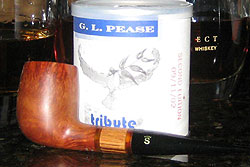 Our first question this month mentions the affliction of Pipe Acquisition Disorder (PAD), and it got me thinking, often a dangerous thing, especially for those on the other end of one of my screeds. He says that he’s got PAD “ever so bad,” begging the question, at least to my sometimes weird way of viewing the world, is PAD, providing you’re not spending your family’s food budget, or taking out a second mortgage on your house, of course, ever really a bad thing? PAD fuels a cottage industry of pipe makers and sellers (and even tobacco producers, since pipesters need to have something to burn in their new acquisitions). This, I can only see as a good thing, not only for the industry, but for all of us, and for the world.
Our first question this month mentions the affliction of Pipe Acquisition Disorder (PAD), and it got me thinking, often a dangerous thing, especially for those on the other end of one of my screeds. He says that he’s got PAD “ever so bad,” begging the question, at least to my sometimes weird way of viewing the world, is PAD, providing you’re not spending your family’s food budget, or taking out a second mortgage on your house, of course, ever really a bad thing? PAD fuels a cottage industry of pipe makers and sellers (and even tobacco producers, since pipesters need to have something to burn in their new acquisitions). This, I can only see as a good thing, not only for the industry, but for all of us, and for the world.
The world of the pipe is antithetical to much of the troubles that face us daily—the short attention spans spawned by modern life, the endless bumble-bee flitting from one thing to the next. If there were more people with PAD, there would be less crime, our students would suddenly become smarter and embrace their education, the economy would improve, the unemployment rate would plummet to near zero, we’d have universal health-care, and wars would spontaneously stop. People would take time to smell the tobacco, have a cup of tea, read a book, and share good conversation with their friends instead of succumbing to device-driven ADD.
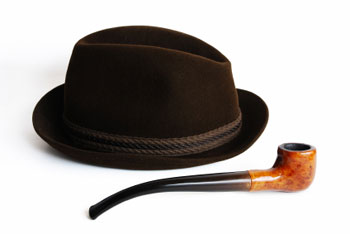 So, bring on the PAD, and wear it on your hat band! And, whilst we’re at it, we should work to bring back hats, too. Not ill-fitting ball caps worn in ludicrous ways, at angles that are oddly juxtaposed to the natural geometry of the head, visors thus robbed of their intended purpose of keeping the sun out of the eyes. I don’t mean hats like that. I mean hats with crowns and brims and bands. Fedora, Homburg, Bowler, Trilby and Topper. Real hats. HAD and PAD, together, would make the world a better place.
So, bring on the PAD, and wear it on your hat band! And, whilst we’re at it, we should work to bring back hats, too. Not ill-fitting ball caps worn in ludicrous ways, at angles that are oddly juxtaposed to the natural geometry of the head, visors thus robbed of their intended purpose of keeping the sun out of the eyes. I don’t mean hats like that. I mean hats with crowns and brims and bands. Fedora, Homburg, Bowler, Trilby and Topper. Real hats. HAD and PAD, together, would make the world a better place.
Kidding aside, I do believe that if more people smoked pipes, took time out of their hurried existence to sit back and enjoy those wonderful ritualistic moments of leisurely pleasure the pipe promises, we’d probably be a lot happier as a society. We might take the time to read more books, to be more reflective, more thoughtful, to work toward understand one another a little more, to discuss our problems with greater civility, and work toward solutions rather than be mired down by conflict. The pipe can be a talisman of a better way of living. It delivers the sort of lasting pleasures that little in the modern world can. But, we already know that. We’re pipe smokers.
So, when that next surge of PAD rears its head, embrace it, buy it a hat, and take comfort in the knowledge that you’re making the world a better place. On to the questions.
From Robin: Hi Mr. Pease, question for you on pipes. I’ve got PAD ever so bad! I’ve purchased 42 pipes in under a month, 36 of which are estate finds. All need cleaning and care, and my question is – do you know of a “kit” or at least what I should use on my pipes to clean them up and bring them back to life? Along with this, I have a couple Meerschaums that I would like to clean up, but am not sure how to handle those.
A: I don’t know of a “kit,” per se, that will give you the tools and supplies you need to do the job, but the first question to ask is how much of a job do you want to do on these pipes? For simple cleaning, only a few tools are necessary. A good supply of pipe cleaners, a bottle of vodka, and a toothbrush can work wonders. Clean the shank thoroughly with the pipe cleaners, tips gently dipped in the alcohol, and give the shanks a good cleaning. You might be surprised at how much gunk you’ll find in there, but it’s important to get as much of it out as possible if you want to get the best smoke, so repeat the process until the pipe cleaners emerge almost as clean as when they went in. It’s not unusual in an older pipe to go through this process with a dozen or so cleaners, but it’ll make a world of difference. The inside of the stem can be cleaned in the same manner. Take care not to get alcohol on the surface of the pipe or the stem, however, as it can damage the finish.
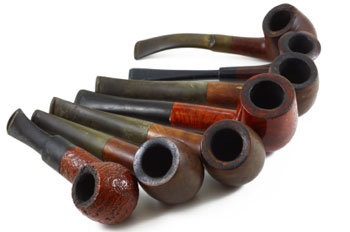 Then, address the tobacco chamber. ["Hello Tobacco Chamber" – just kidding: Editor] If the cake is thick, you’ll need to carefully trim it back. Every pipeman seems to have his own preferred cake thickness, but the standard rule of thumb is to have the cake no thicker than a dime. Reaming takes attention and care. It’s not hard to go too far, gouging into the wood, even to the point of making the chamber oblong. Proceed slowly.
Then, address the tobacco chamber. ["Hello Tobacco Chamber" – just kidding: Editor] If the cake is thick, you’ll need to carefully trim it back. Every pipeman seems to have his own preferred cake thickness, but the standard rule of thumb is to have the cake no thicker than a dime. Reaming takes attention and care. It’s not hard to go too far, gouging into the wood, even to the point of making the chamber oblong. Proceed slowly.
Personally, I like the triangular reaming tool that used to be sold under the Savinelli brand (it might still be), but there are other types of reamers that do a serviceable job, as well. (Readers are invited to post their faves in the comments section.) Whatever tool you choose, I repeat, please proceed with caution. A lot of pipes have been ruined by inattentive, overzealous reaming with sharp tool and a heavy hand.
If the top of the pipe is covered with hardened tar, employ the toothbrush, a little warm water (don’t use alcohol on the outside of the pipe, as it can ruin the finish) and some patience. I’ve sometimes had to invert the pipe in a shallow saucer of water, for a while to soften the buildup. How much effort you put into this part is a matter of personal preference.
There are products made for polishing the outer surface of the bowl. Some are in the form of a paste-wax, others in the form of an impregnated cloth. Used according to their instructions, they do a fairly good job, but if you want to get a high polish, you’ll need some hard carnuba wax and a buffing wheel. I strongly recommend against using any product on a pipe that is toxic, or that has a strong smell, as it can linger for some time, and adversely affect the aroma and flavour of your smoke for quite a while. Leave the car wax to the guy who details your car, and the strong smelling Murphy’s Oil Soap for whatever the hell it’s good for. They’re not for pipes.
Any oxidation on the stem might require more dramatic measures, and unless you’ve got the right tools (a selection of fine sandpapers, buffing wheels, fine polishing compounds) and some experience using them, I generally recommend leaving this sort of restorative work to the pros, or at least practicing on pipes you don’t care about before tackling those you do. If you do decide you want to swim in that pool, read more about the process in the excellent article my late friend Serge Dasara wrote on the subject, Buffing and Polishing. It’ll either arm you with the knowledge you need, or scare you off.
A brief word about pipe cleaners: I’ve recently been using the ones sold by Brigham—they’re absorbent, stiff enough to be coaxed into stubborn stems, and quite lint-free. Their ends are cut cleanly, so they don’t leave scratches inside the shank and stem, and they’re a little longer than some of the other brands. These may be the best currently on market, and I’m comfortable recommending them. (And, yes, it’s quite geeky to pay that much attention to pipe cleaners.)
As far as meerschaums are concerned, I’ll have to defer to others more qualified to help there.
Rick wants to know: Would like to locate a good tobacconist who might be able to duplicate the old discontinued tobacco “WHITEHALL”. (And, perhaps, RUM & MAPLE). I used to smoke a mixture of Borkum-Riff (whiskey), Whitehall and Rum & Maple. A very pleasing aromatic mixture that my wife and ladies loved. I really miss that mixture.
A: Truly and accurately recreating old blends is something that borders on the impossible, as I’ve discussed in previous columns, though it is sometimes possible to come close enough to bring pleasure. (Sounds like a fortune cookie, doesn’t it?) A tobacconist would have to have fairly intimate knowledge of and experience with all the tobaccos involved, what sorts of leaf were used in their formulations, and the nature of the casing and top flavourings used.
The good news is that since you’re not really after one individual brand, but something similar to a mixture of three, you might have better luck starting from scratch with a tobacconist who can make something up specifically for you. Depending on where you are, there might be a local shop with a working tobacconist who could help, or you might have to talk by telephone about what you’re after with a distant tobacconist who has a good inventory of different aromatic blends, and try to put something together yourself. You may not get to the same mixture you remember, but you just might find something you like even better.
From Adam: Greg, the topic of sodium-silicate as a coating for tobacco chambers has recently come up on the PipesMagazine.com forums. I am of the opinion that this practice is detrimental to the enjoyment one gets from pipe-smoking due to the impervious qualities of the product, however others have stated they feel it actually improves the pipe – perhaps you can shed some light on the subject?
A: A nice controversial subject, isn’t it? In short, I prefer pipes to be uncoated, but I don’t categorically consider all bowl coatings to be a Bad Thing (TM). That said, I’m with you that silicate-based coatings interfere with the long term development of a rich tasting pipe, and I just plain don’t like them. But as you point out, some people seem to think they’re a positive thing. I think a lot of the difference has to do with what the smoker expects from the pipe, and from the smoking experience. Silicate-based coatings are a sort of equalizer, in a sense, making every pipe taste more alike than different, but I actually like the taste of the wood, and the fact that each pipe is unique, presenting its own personality, and I enjoy discovering what that personality is, and how it changes over time. I’m planning to approach this a little more deeply in the future; I’ll defer further discussion until then.
 Pete asks: Dear Sir, Is it true that smoking a pipe makes you more intelligent, friendly, witty and attractive to members of the opposite sex?
Pete asks: Dear Sir, Is it true that smoking a pipe makes you more intelligent, friendly, witty and attractive to members of the opposite sex?
A: If Pete were a well-established pipe smoker, he would know that the answer to his question is yes.
Before I took up the pipe, I was a 98 pound (that’s seven stone across the puddle) weakling, body covered with warts, head festooned with stringy, greasy hair. I was devoid of personality, and stupider than a box of Market Street pigeons. Men pointed and laughed at me uncomfortably, women hid their faces and turned away in disgust. I belched incessantly, and had a propensity to pass gas in the lift (elevator on this side of the puddle). On those rare occasions I was able to coerce and lock people into a room with me, none were amused by my attempts at jokes, and cab drivers would accelerate when they saw me standing on the corner in the rain, purposely splashing me with mud as they sped away, no matter how large a bill I waved in the air when hailing them. My parents disowned me, and moved to another country. Even pickpockets would cross the street when they saw me coming, rather than risk catching some sort of disease by robbing me.
Today, as pipe smoker of some few years, I no longer have any trouble hailing a cab.
That’s it for this month. Keep those cards and letters coming.
-glp
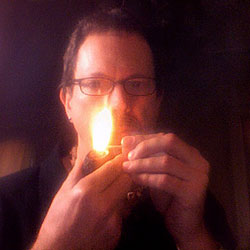 Since 1999, Gregory L. Pease has been the principal alchemist behind the blends of G.L. Pease Artisanal Tobaccos. He’s been a passionate pipeman since his university days, having cut his pipe teeth at the now extinct Drucquer & Sons Tobacconist in Berkeley, California. Greg is also author of The Briar & Leaf Chronicles, a photographer, recovering computer scientist, sometimes chef, and creator of The Epicure’s Asylum. See our interview with G. L. Pease here. |







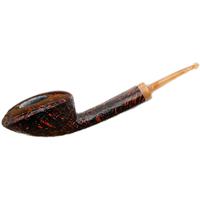
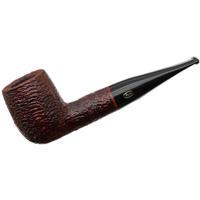
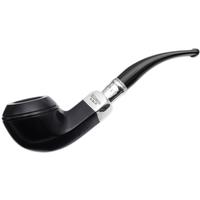


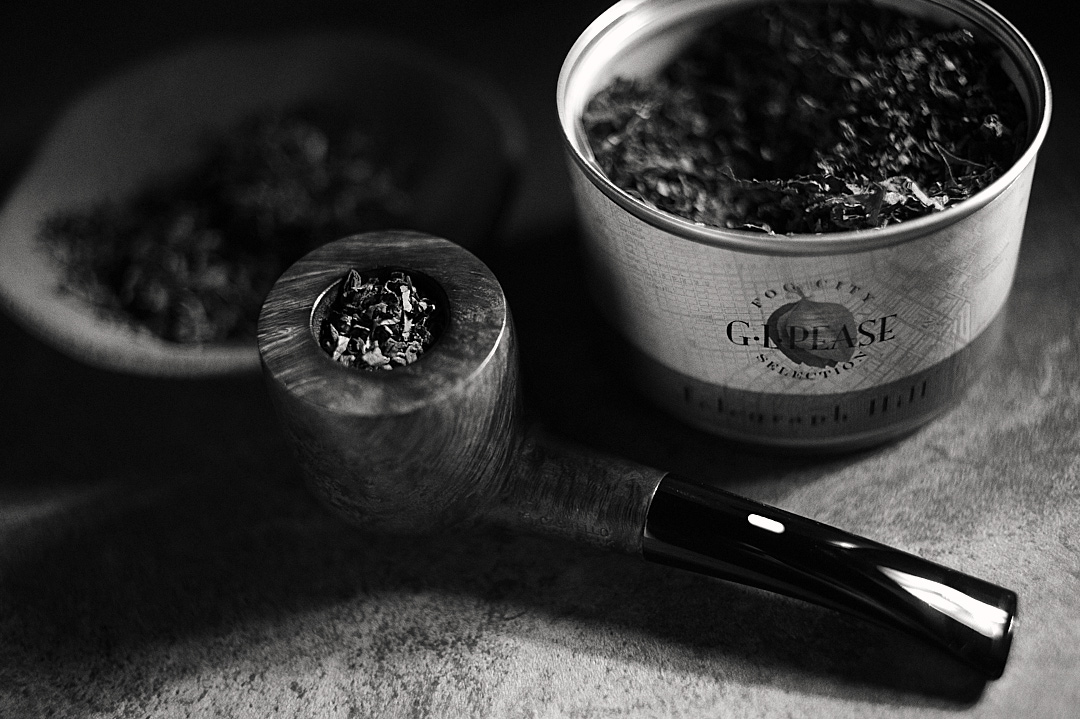



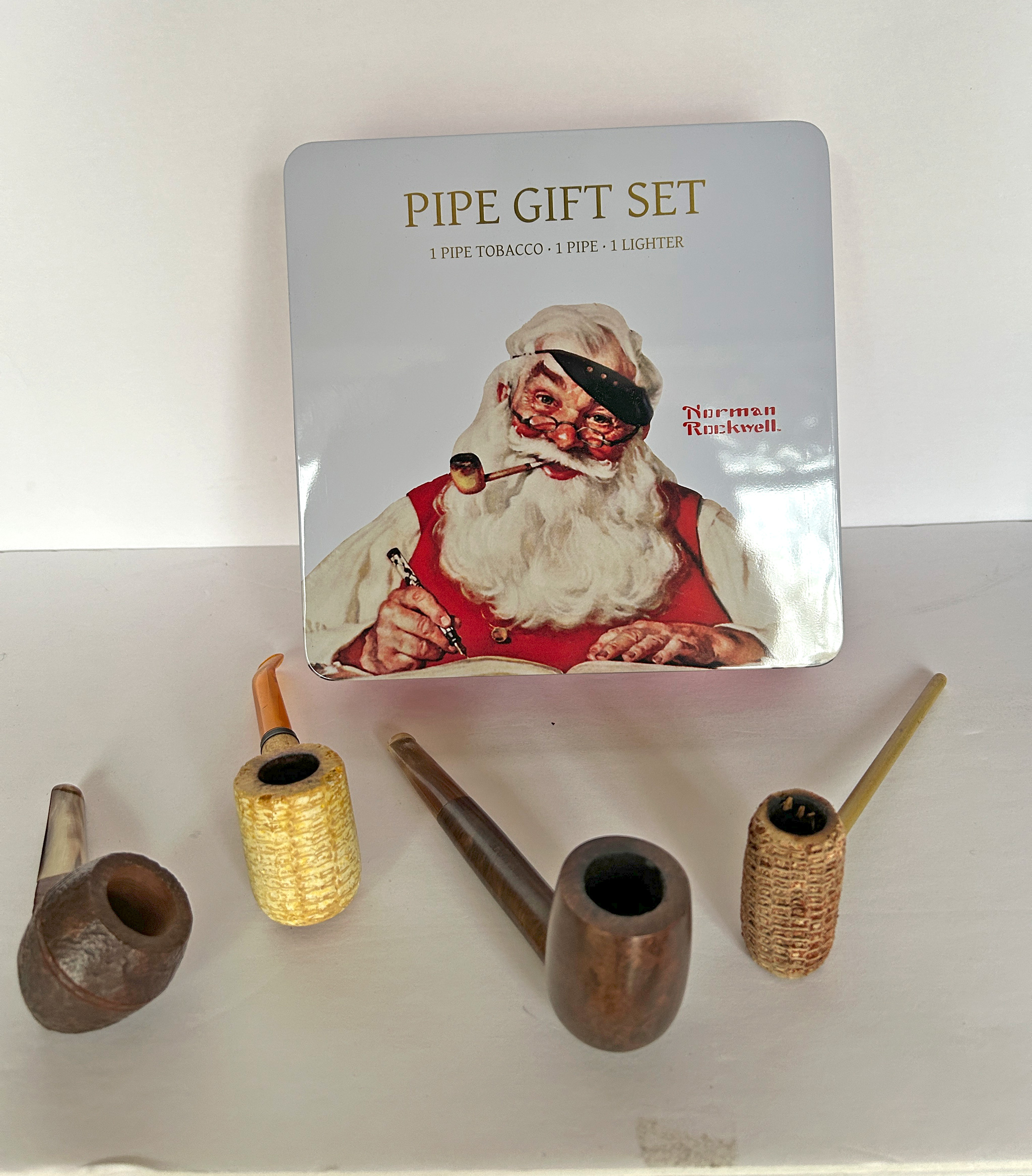



Thanks for an entertaining and well written article. I appreciate the effort it takes to be a bloody Jacob Bronowski.
Greg,
Great article. I have also got PAD but think of it as a Planned Acquisition Development to meet my need for unghosted pipes to enjoy the tobacco range purveyed by a certain GLP! However, I must record my thanks to the said same gentleman for the guidance in his pipe reviews for introducing me to Danish pipes, particularly Stanwell (by incredible good fortune this coincided with a sale of vintage sample pipes at the Danish Pipe Shop from the now closed Danish Stanwell factory on their re-location to Italy – great pipes for about $150 a throw) and the incredible Peter Heeschen. I can add another, perhaps less deserving, beneficiary to your list of worthy artisans – the UK Exchequer who take 28 per cent on each of the Peter Heeschens that rather ironically I mostly have bought from US suppliers.
On pipe cleaners I have an Artemis multi attachment reamer obtained after cutting a hole in the side of a much loved Dunhill with a pipe knife; a dreadful warning to the sloppy pipesmoker like myself. Also ordinary pipe cleaners, often Dunhill (old habits die hard), and Wilsons abrasive pipe cleaners for gungy stems.
[quote]We might take the time to read more books, to be more reflective, more thoughtful, to work toward understand one another a little more, to discuss our problems with greater civility, and work toward solutions rather than be mired down by conflict. The pipe can be a talisman of a better way of living. It delivers the sort of lasting pleasures that little in the modern world can. But, we already know that. We’re pipe smokers.[quote/]
You can’t sum up the pipe smoking experience better than that.
I heartily recommend Steve Laug’s “Reborn Pipes” blog if you have any interest in learning how to restore estate pipes. Steve pretty much covers every aspect of the process with detailed photos and narrative.
http://rebornpipes.wordpress.com/about/
We need a picture of Greg in a hat!
To add to the cleaning up of estate pipe thoughts, the most important bit to get clean is the shank and particularly the mortice where most of the gunk seems to reside. I’d add to the kit with a set of drill bits that can be passed into the mortice by hand in increasing incremental sizes till the crud is all out (NB – we’re not removing wood here); a smaller set of drill bits can be passed through the shank until that is showing clean.
For meerschaum cleaning up, the best authority is Fred Bass; here’s a link to his article for PM:
https://pipesmagazine.com/blog/put-that-in-your-pipe/the-thrill-of-the-hunt-a-guide-to-estate-meerschaums/
Ed, glad to help fuel the development in whatever small way I have. 😉 (Even if I’m not Doctor Bloody Bronowski…)
I have made it a point to try “reborn” and representative tobaccos of old, in an attempt to replicate the experiences of the past. Russ Oullette’s Fuselier’s Ration is a good example, reminiscent of the old Bengal Slices. And I think Home and Hearth’s Latham Circle to be the best Rum and Maple blend out there. Unfortunately, I do not remember Whitehall, so I can’t comment on that. The fun for me is trying all these to see if the spark is still there, lol.
Most of my pipe collection is estates; I find some catharsis in smoking an old pipe I restored myself. There is plenty of information out there for the novice to get started, and I agree, start with a couple of junk pipes to get the hang of it. Heck, some of my junkers have become favorites once cleaned up.
Smoking a pipe may not have transformed me into “the Continental”, but aromatics do attract the ladies…
Methinks, I will go into my closet and dust off my old Homburg (what a glorious hat) and go to the opera this week-end.
I second the pipes and hats sentiment. Got a few hats myself, my favorite is from Orvis who feeds my other hobby.
Even when you’re wearing nothing else, a hat is a good idea.
I’m going to take the oppurtunity now that I’ve read this column twice and noticed it,to mention my favorite pipe reamer. Waaay back in the late 60’s I bought a reamer that read British Butner. Now, it isn’t alot of money now but to a kid around 18 back then $12.50 was a hoot! Anyhow nowadays I’m seeing many things called ‘butner’ style. I guessing I have the real thing and STILL use it. It’s very well constructed steel and with a steady careful hand will ream any pipe in the house. It is self adjusting and man that makes things really simple. STILL though when reaming one must pay attention to what they are doing or they gonna go and mess it up